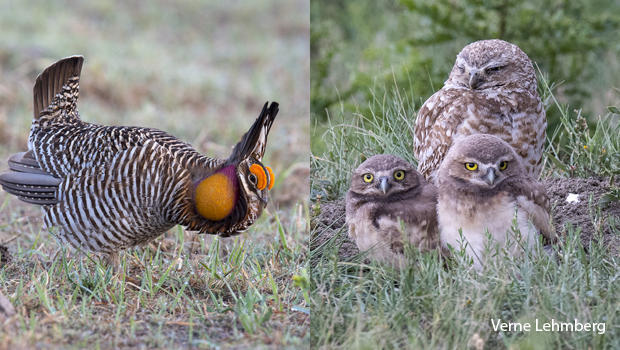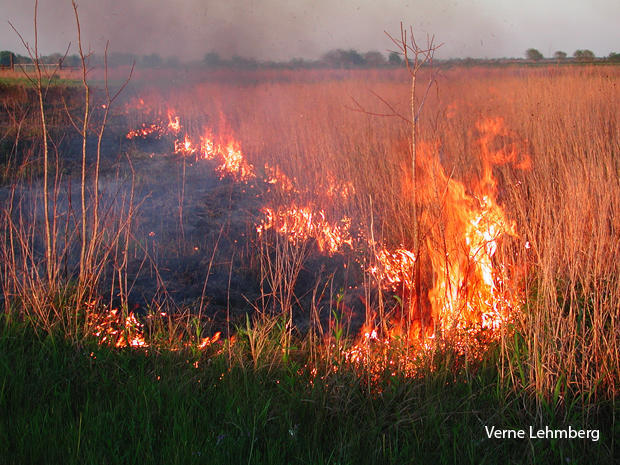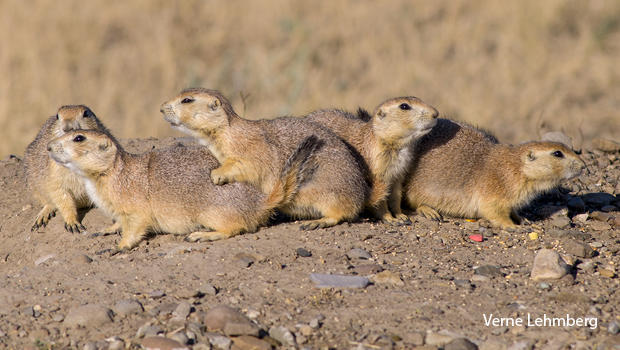By “Sunday Morning” contributing videographer Judy Lehmberg.
Grasslands are the world’s breadbasket. They provide essential habitat and food sources for zebras, wildebeest, bison, antelope, and many other species, including humans. The simplest way to describe a grassland is an area that gets between about 10 to 32 inches of rain each year – more than a desert, but not enough to maintain trees.
Two hundred years ago grasslands, or prairies, were found from throughout much of Texas up into Southern Canada, and from the Rockies to east of the Mississippi River. They are one of the major reasons the United States is a rich country.
Grasslands look deceptively simple, but look more closely and you will see they harbor a wide and rich diversity of grasses, wildflowers and animals, from insects to mammals.
Some of the more obvious grassland birds include various species of hawks, a surprisingly high number of owl species, grouse, prairie chickens, and numerous songbirds, including sparrows, meadowlarks, pipits, blackbirds and swallows. Bison, prairie dogs, deer, foxes, coyotes and the once-believed-extinct black-footed ferret are all grassland residents.
Grasses are true flowering plants; that is, they have flowers just like rose and sunflower plants have flowers. The difference is most grasses are pollinated thanks to the wind, not insects, so they don’t have showy petals, an attractive smell, or nectar, so grass flowers mostly go unnoticed. Yet they do sexually reproduce, so they still have male stamens that produce sperm inside the pollen grains, and the female pistil with an ovary containing eggs.
Grasslands evolved with fires, which used to occur more frequently than now, as native grasslands have become smaller and smaller, and therefore more fragmented. Yellow-sweet clover, a plant native to Europe and Asia, has been introduced into the U.S. Although it does replenish nutrients in soil, by converting atmospheric nitrogen to a form of nitrogen plants can use to make proteins, it crowds out native species, thereby limiting species diversity where it is found. Properly-timed prescribed burns, in the early fall, can kill their seeds before they mature.
Today, most (98%) of America’s tall grass prairies have been plowed and replaced with crops, which has resulted in a huge loss of top soil and nutrients, as well as increased global warming, because grasslands sequester carbon dioxide while croplands release carbon dioxide when plants are harvested. Due to human over-use, worldwide grasslands are one of our most threatened biomes.
Established In 1960, the Oglala National Grassland (featured on this week’s “Sunday Morning”) is comprised of about 95,000 acres in the northwest corner of Nebraska. It is a grassland only partially-protected, because it is managed by the U.S. Forest Service, which allows both hunting and cattle grazing.
Judy Lehmberg is a former college biology teacher who now shoots nature videos.
For more:
To watch extended “Sunday Morning” Nature videos click here!
© 2019 CBS Interactive Inc. All Rights Reserved.





